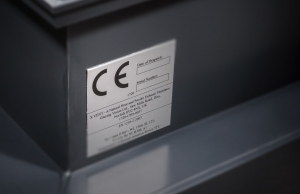Introduction:
The CE marking, short for Conformité Européenne, is a mandatory certification for products sold within the European Economic Area (EEA). It signifies that a product complies with the essential health, safety, and environmental requirements set out in European Union (EU) legislation. This article provides a step-by-step guide on how to obtain CE marking for your products, facilitating market access and demonstrating compliance with EU regulations.
Understanding the Basics:
Identify Applicable Directives: The first step in obtaining CE marking is to identify the specific EU directives that apply to your product. These directives outline the essential requirements and standards that products must meet to be eligible for the CE mark.
Determine the Appropriate Conformity Assessment Procedure: Depending on the nature of your product, there are different conformity assessment procedures outlined in the relevant directives. These procedures range from self-certification to involving a notified body, which is an organization designated by an EU member state to assess the conformity of certain products.
Preparing Technical Documentation:
Compile Technical Documentation: Create comprehensive technical documentation that demonstrates how your product meets the essential requirements outlined in the applicable directives. This documentation should cover design, manufacturing processes, testing, and risk assessments.
Appoint an Authorized Representative: If your company is based outside the EU, you may need to appoint an authorized representative within the EU. This representative acts as a point of contact for authorities and ensures compliance with CE marking requirements.
Conducting Conformity Assessment:
Choose the Conformity Assessment Route: Select the appropriate conformity assessment route based on the nature of your product. This could involve self-certification, involvement of a notified body, or a combination of both.
Testing and Certification: If required, conduct necessary tests on your product to ensure it meets the specified standards. For products requiring the involvement of a notified body, they will assess your product and issue the relevant certification.
Affixing the CE Mark:
Prepare the Declaration of Conformity: Draft and sign a Declaration of Conformity, which is a legally binding document stating that your product complies with the relevant EU directives.
Affix the CE Mark: Once you have completed all necessary steps and your product is in compliance, affix the CE marking to the product and, if applicable, the accompanying documentation.
Ongoing Compliance:
Implement a Quality Management System: Establish and maintain a quality management system to ensure ongoing compliance with CE marking requirements. Regularly update technical documentation and respond to any changes in relevant directives.
Conclusion:
Navigating the process of obtaining CE marking can be complex, but it is a crucial step for accessing the European market. By understanding the applicable directives, preparing comprehensive technical documentation, and following the appropriate conformity assessment procedures, businesses can successfully obtain CE marking and demonstrate their commitment to product safety and regulatory compliance in the European Economic Area.

